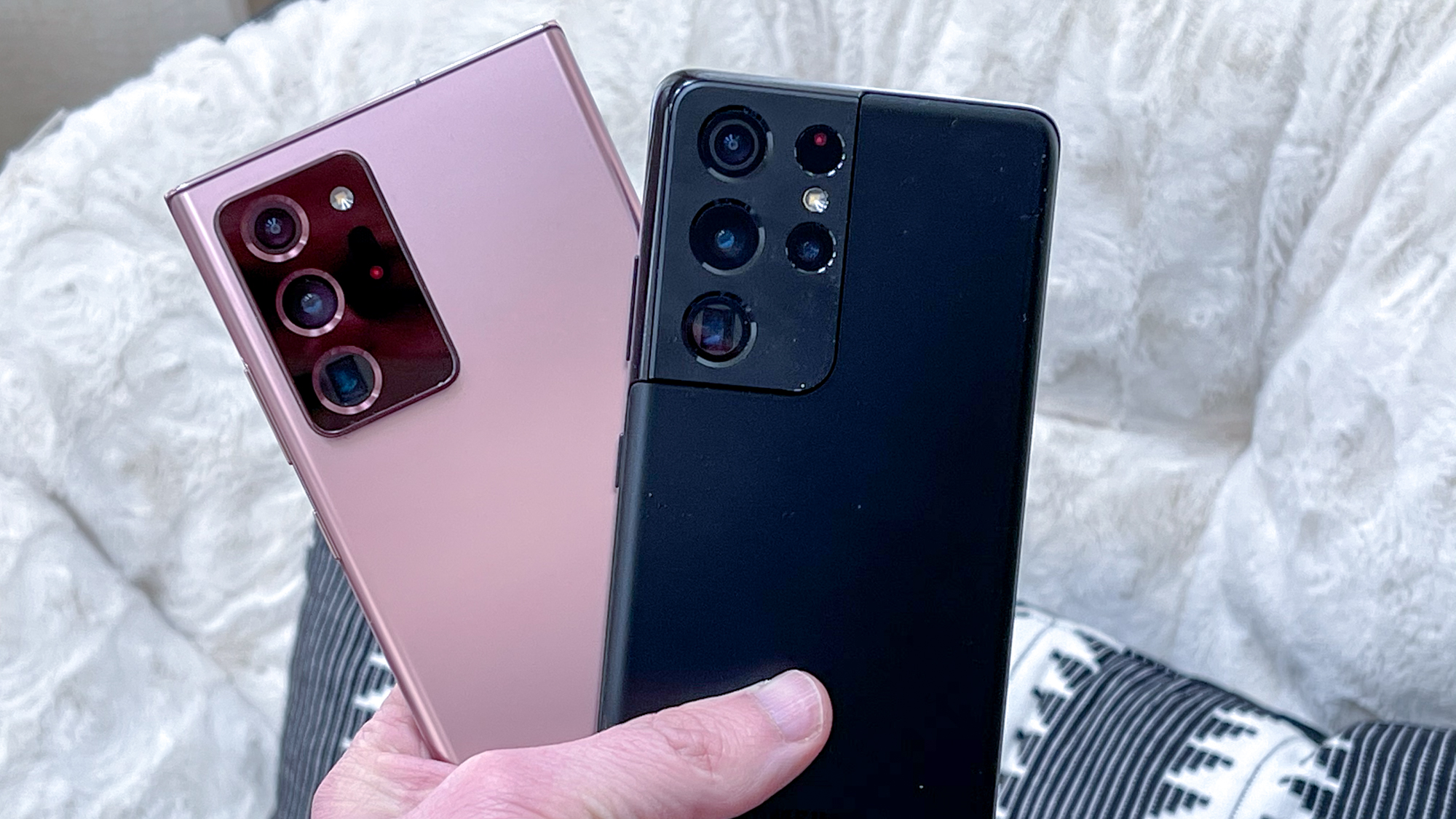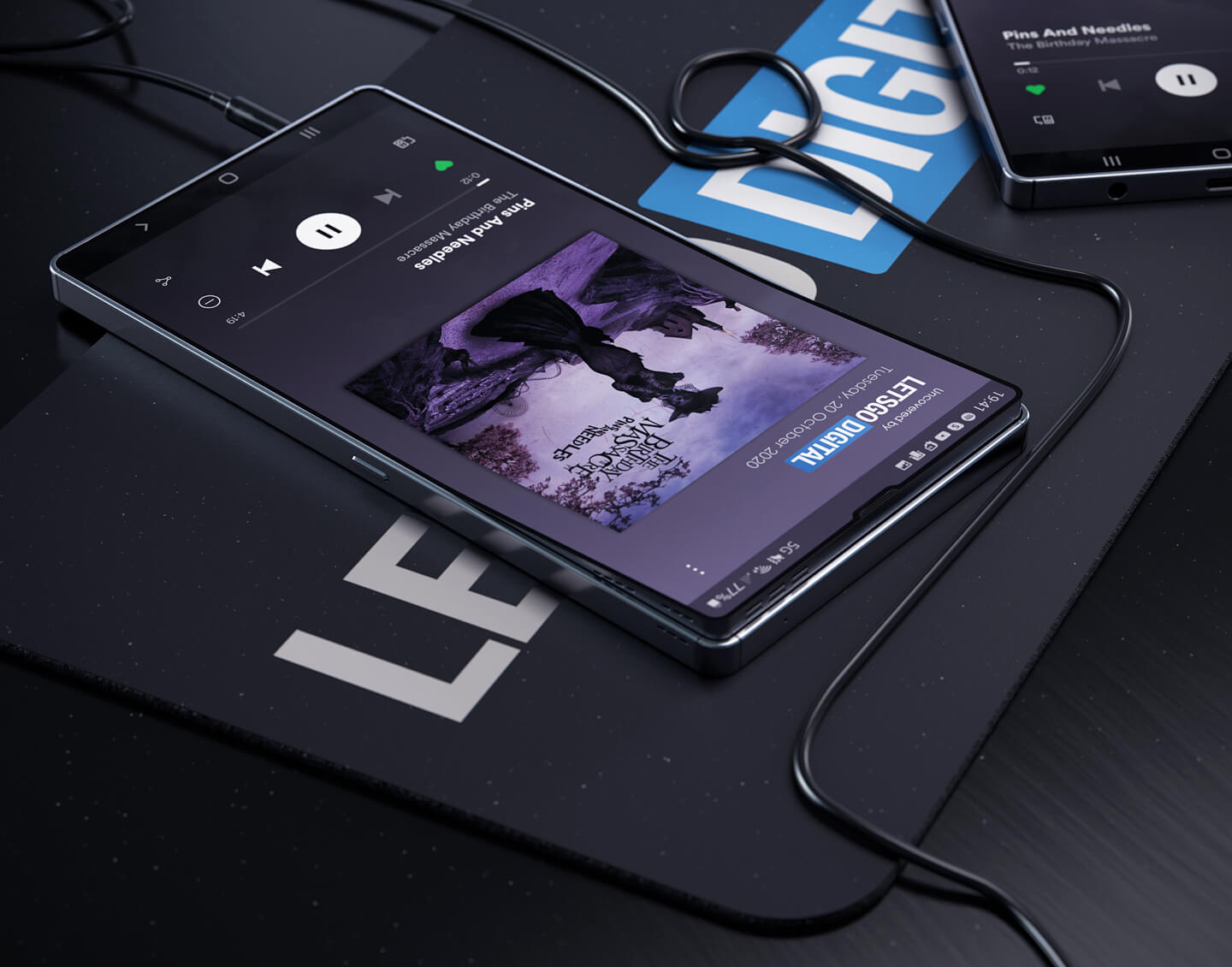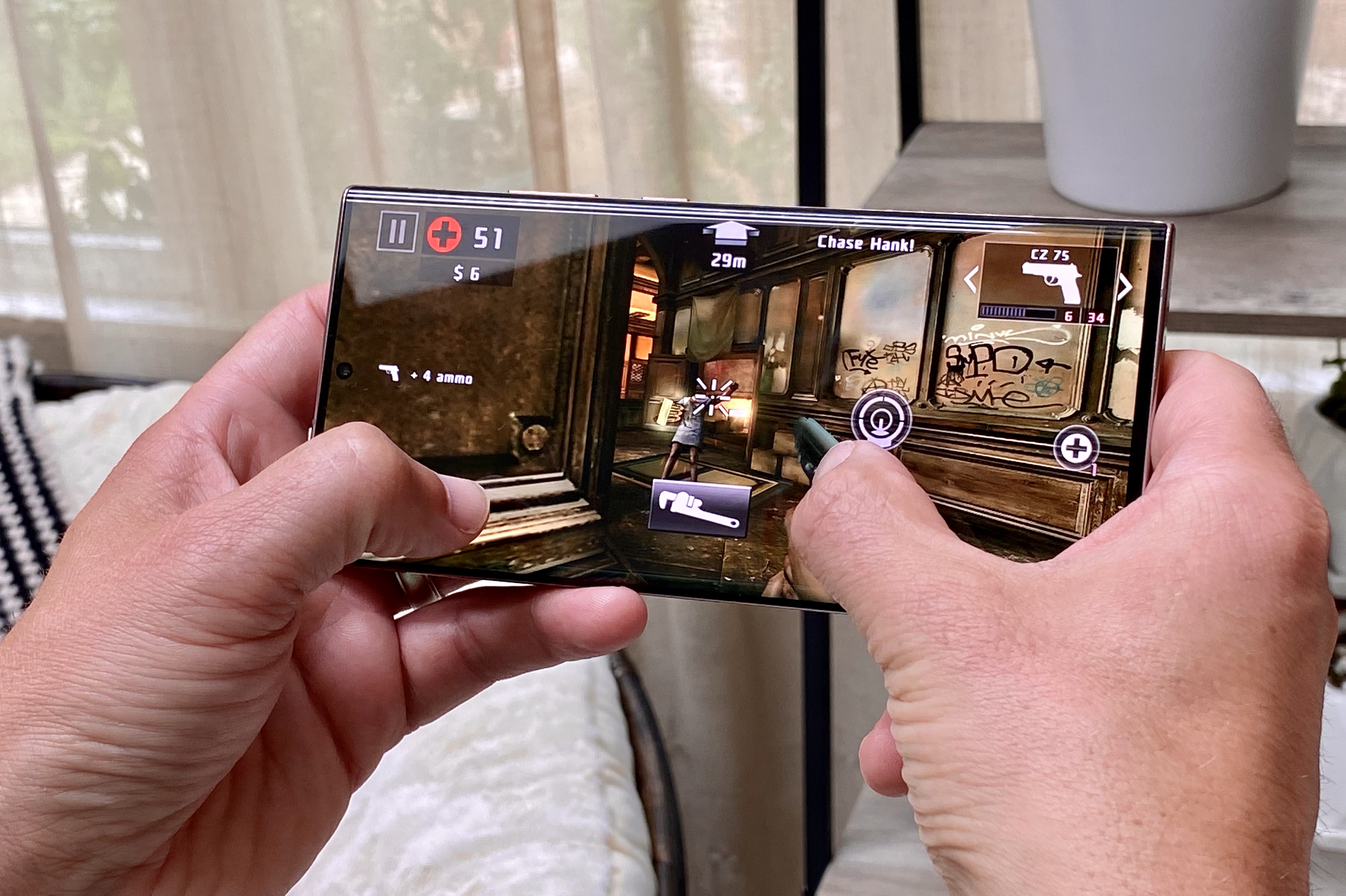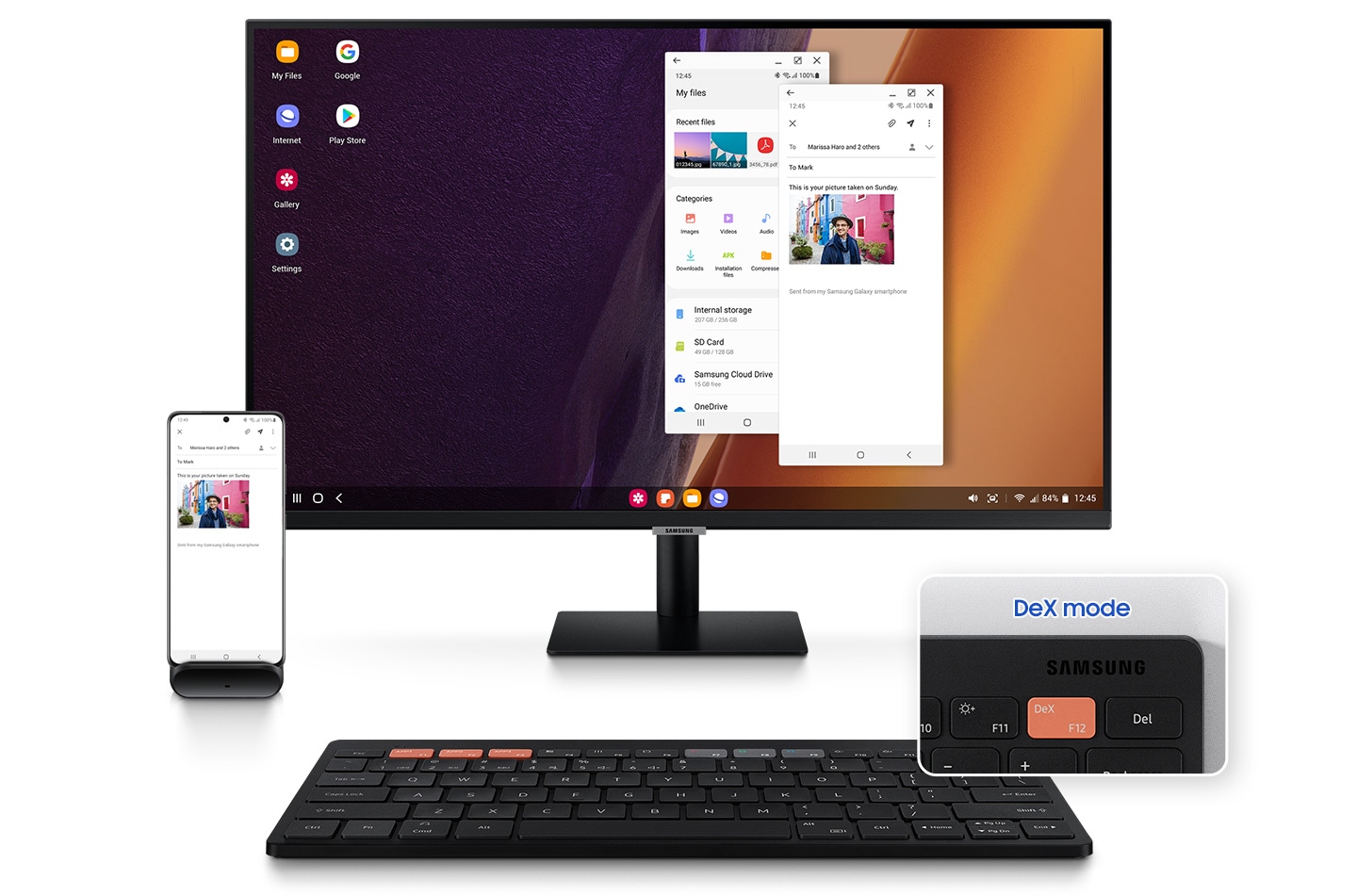Samsung Galaxy S22 needs these radical upgrades — or I’m out
Samsung needs to wow me with the Galaxy S22 if it wants me to upgrade

Over the past week, rumors around the Samsung Galaxy S22 have picking up steam. While still thin on the ground, we’ve seen hints that the next standard flagship phones from Samsung could be more compact than their predecessors, be gaming powerhouses, and potentially use a new 50MP camera.
Better specs and a design that could see the Galaxy S22 be easier for people with smaller hands to handle is good news. But it’s left me thinking what more can Samsung do to make its high-end Galaxy phones stand out from its predecessors.
- Samsung Galaxy S22 — early leaks and the upgrades we want
- Best Android phones: Our top picks
- Plus: Samsung says Galaxy Z Fold 2 is not discontinued ahead of Z Fold 3 launch
In my Samsung Galaxy S21 review I was thoroughly impressed by the standard handset. Sure, it made a few cuts, such as dropping the curved display edges, removing the microSD card reader and opting for a plastic back. But the phone is a fantastic device; it has a brilliant 120Hz refresh rate display that is just the right size for one-handed use, for me at least. The cameras are very good — not the very best but still proper flagship grade. And performance is plenty fast.
As such, I can't really see what more Samsung could do to make the Galaxy S22 an appealing upgrade from the S21 or even the Galaxy S20, given the standard S21 wasn't a huge upgrade over the older phone; the Samsung Galaxy S21 Ultra brought the biggest upgrades.
Galaxy S22: Iterative upgrades again?

Going by the leaks so far, we can expect a boost in performance, improved cameras and an under-display selfie camera. Better battery life and faster charging is also likely to be on the cards. As a whole that’s not bad, but let’s take a closer look.
In the U.S., the Galaxy S21 got the powerful Snapdragon 888, but the Exynos 2100 chip that the U.K. and other regions received was no slouch. For multitasking and gaming, I found the Galaxy S21 didn't break a silicon sweat. Mobile games could be maxed out and the whole user experience felt very snappy; the Oppo Find X3 Pro feels faster, but that’s likely down to software optimization — I was never left wanting for speed with the S21.
The trio of cameras on the Galaxy S21 were also pretty impressive. Granted, I prefer the results the Google Pixel 5 and iPhone 12 deliver, but that’s subjective. For most people who snap photos of food, cats and dumb things, the Galaxy S21 does a fine job. The wide-angle camera could do with a boost in detail and clarity when punching into shots, but that’s something that phone reviewers seem to fuss about, not the average phone user.
Get instant access to breaking news, the hottest reviews, great deals and helpful tips.
I do like the idea of an under-display selfie camera for the Galaxy S22, as a phone that’s all screen is fine by me. But I didn’t find the punch-hole front-facing camera in the Galaxy S21 to be too intrusive. And I’d rather have a cut-out than a selfie camera that lurks beneath the display yet delivers unimpressive snaps.
And yeah, better battery life and faster charging is always welcome. But the Galaxy S21 never felt like it dropped the ball in either area.
Obviously, Samsung will make a follow-up to the Galaxy S21 as that’s how tech companies and the business of phones work. But given I have a friend who’s still seeing good use out of a Galaxy S10, and folks are getting more environmentally conscious, I’m starting to wonder if the likes of Samsung and OnePlus can keep pumping out iterative upgrades on their phones and keep people interested.
Where could the Samsung Galaxy S22 go?

While the iPhone 13 has an obvious upgrade path in the much-rumored 120Hz display (or at least the Pro models) I’m not sure where the Galaxy S22 could go from the S21.
Much like Alexander wept for there were no more worlds to conquer, perhaps Samsung’s engineers are weeping as there are no more significant upgrades to do; that's probably why foldables seem to be its focus.
So what could the Samsung Galaxy S22 offer to get me excited? Well I have a few ideas.
The Samsung Galaxy Note 21 doesn't seem like it’s going to be a thing this year. And it might have been retired now that Samsung’s foldable phones seems to be positioned as the devices to represent the best of the company’s phone tech. If that’s the case, I’d really like to see the boxy design of the Note series come to the Galaxy S22.
Not a lot of phones have aped that design, whereas Android phones with rounded and curved edges are now commonplace. So if the Note’s DNA comes to the Galaxy S22, beyond S Pen support, I’d be interested.
Supercharge camera hardware and software

Samsung is tipped to have a potential partnership with Olympus to work on cameras for the latter’s upcoming phones. If there is a grain of truth here, I’d hope to see the Galaxy S22 cameras offer a major upgrade.
We’ve seen such phone and camera maker partnerships yield mixed results. The OnePlus and Hasselblad combo yielded the impressive OnePlus 9 Pro and its camera system, though some might not like the muted colors.
In the case of the Galaxy S22, I’d really like to see improvements on the software and hardware side, not just on one or the other. Samsung’s cameras are already impressive, though some image processing is not to my taste. So a partnership with Olympus would need to offer more than a branding exercise.
I’d want a camera system that captures a lot more detail when one zooms into a shot, captures a better range of colors and delivers more optical image stabilization.
Portrait mode and the accuracy of skin tones is also an area where Samsung's phones have consistently fallen short compared to Apple and Google's image processing, so some external expertise could sort this. And I want to see video that’s on par with the iPhone 12 Pro, with point-and-shoot results being as impressive as they are easy to get.
If the Galaxy S22 does opt for an under-display selfie camera, then it needs to be a class-leader offering photo results that are equal to a standard front-facing camera yet completely hides the lens underneath the display.
Speaking of displays, I’d like to see the Galaxy S21 come better calibrated for the likes of DCI-P3 color gamut rather than offering over-the-top colour saturation out of the box. Otherwise, I’m not sure what else Samsung could do on the screen side; a faster refresh rate wouldn’t be terrible, but 120Hz is plenty fast.
True next-gen performance

Every year, phone makers go on about having super-fast flagship phones, but I’ve yet to see that power really manifest itself in everyday use. That’s especially true of Apple’s A-series iPhone chips, which deliver blistering benchmarks each year but haven’t really changed what apps the Cupertino’s phones can run. It’s also mostly the case with Samsung's phones.
As such, I don’t want a minor speed boost with the Galaxy S22; I want to see a brand new level of performance, especially in an Ultra model. Samsung and AMD have joined forces to mix Exynos chips and Radeon graphics, but we’ve yet to see the fruits of that partnership.
With the Galaxy S22 I want to see a Samsung and AMD chipset that delivers enough performance to actually run true console-quality games. That’s not to say I expect PS5 or Xbox Series X power, but rather last-gen console performance that could see the likes of Doom Eternal or Halo: The Master Chief Collection running natively on the Galaxy S22. We’ve seen the Nintendo Switch run the former, so it’s about time flagship phones started offering proper gaming rather than breeze through mobile games that cheaper phones can also run without a hitch.
Let's talk about DeX

I would also like such power to enable Samsung DeX to deliver a desktop experience that’s on a par with Chrome OS or even Windows. Granted that might be more of a software problem, but that's something Samsung could work on with Microsoft, given the companies have cozied up before.
Despite all the cores and gigahertz Qualcomm mobile chips have to offer, only Samsung has embraced the idea of a phone being used as a device that can deliver a passable desktop computing experience. If Samsung can really double down on this, even working with Google to bring some form of Chrome OS to DeX, then I'd be all ears.
Early Samsung Galaxy phones were all about loading in features, which at time were detrimental to the over all phone experience. But with more power and tech on offer, I'd like to see Samsung return to this 'throw in the kitchen sink' approach; leave restraint to Apple and Google.
Going by the recent generations of Galaxy S-series phones, the above might sound like wishful thinking. But in the past Samsung has produced phones that have arguably moved the smartphone needle generation to generation; the step up from the Galaxy S7 to Galaxy S8 is one example.
I think we’ve at the stage where the past couple generations of Samsung Galaxy S phones are so good that Samsung really needs to do something big to make it’s next non-folding phones standout. And if Samsung can do this, other phone makers are likely to follow suit and we’ll hopefully see smartphone makers do more than slightly tweak cameras and performance.

Roland Moore-Colyer a Managing Editor at Tom’s Guide with a focus on news, features and opinion articles. He often writes about gaming, phones, laptops and other bits of hardware; he’s also got an interest in cars. When not at his desk Roland can be found wandering around London, often with a look of curiosity on his face.
